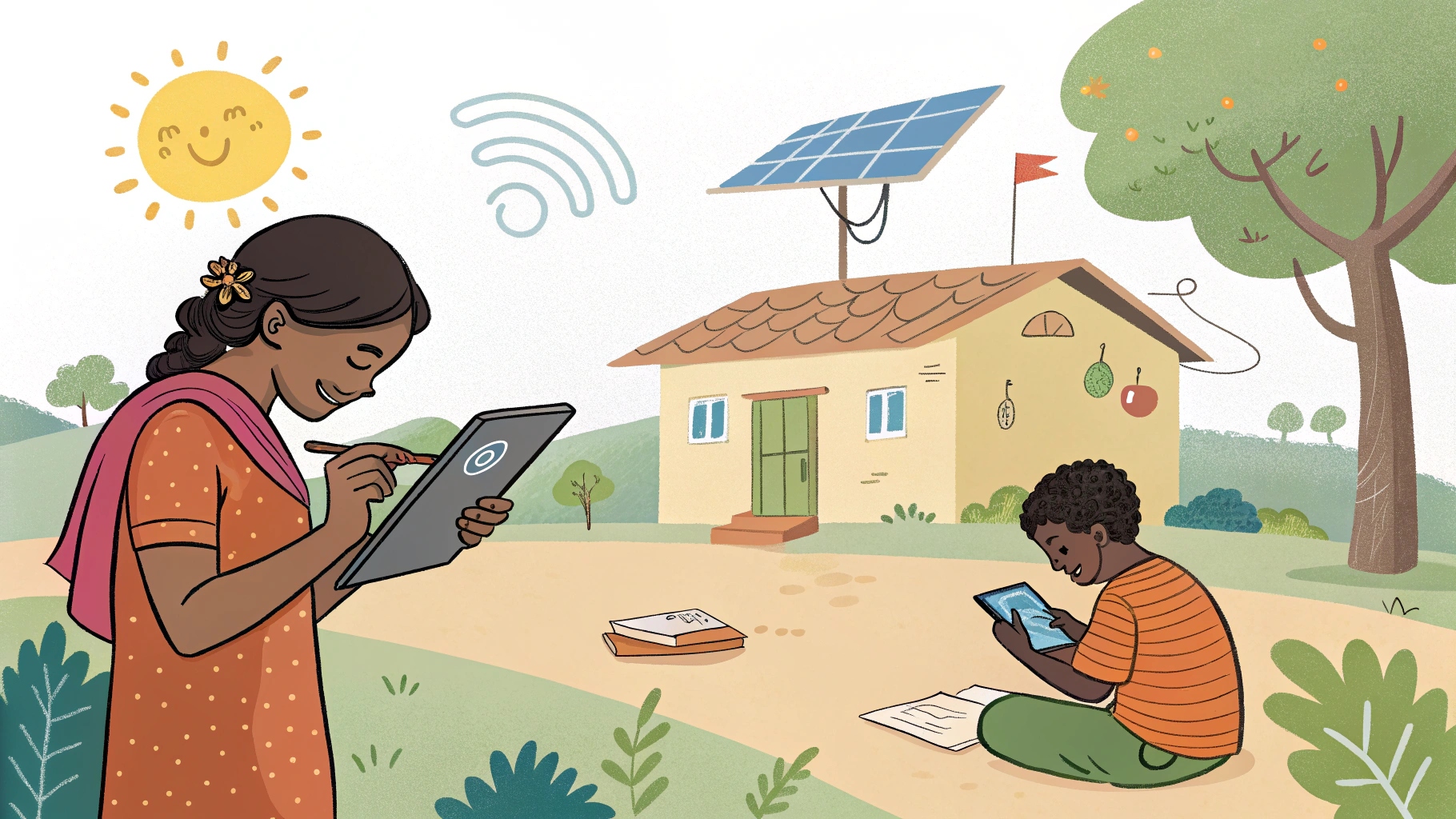In recent years, e-learning has revolutionized education, especially in rural areas of India and other developing countries. What was once considered a luxury or an urban trend is now transforming lives in remote villages. With the rise of smartphones, affordable internet, and digital platforms, students in rural areas now have unprecedented access to quality education.
Access to Quality Education Anytime, Anywhere
One of the greatest benefits of e-learning is accessibility. Students in rural regions often face a lack of good schools, qualified teachers, and study material. Through e-learning platforms, they can now access lectures, notes, and tests from anywhere, at any time. This flexibility ensures that learning continues even where physical infrastructure is weak.
Affordable and Cost-Effective Learning
E-learning reduces the overall cost of education. There’s no need for travel, uniforms, or printed textbooks. Many platforms like DIKSHA, NPTEL, and Khan Academy offer free or low-cost courses. This makes quality education more affordable for families in low-income rural communities.
Personalized and Self-Paced Learning
Every child learns at a different pace. E-learning allows students to pause, rewind, and repeat lessons based on their comfort. This kind of personalized learning is especially helpful for those who may struggle in traditional classrooms due to language barriers or slower comprehension.
Exposure to Modern Technology and Skills
E-learning introduces rural students to digital tools and platforms early in life. Besides academic content, many platforms also teach coding, communication, and digital literacy. This not only builds confidence but also prepares them for future jobs in a tech-driven world.
Addressing the Shortage of Trained Teachers
Rural areas often lack experienced and specialized teachers. E-learning bridges this gap by giving students access to high-quality educators through recorded sessions, live classes, or government-run smart classrooms. Even without a teacher physically present, learning continues effectively.
Encourages Independent Learning and Curiosity
E-learning platforms are interactive, with videos, quizzes, animations, and real-life examples that make learning enjoyable. This keeps students engaged, builds curiosity, and helps them take charge of their own education journey.
Supports Gender Inclusion and Flexibility
In many rural parts of India, girls drop out due to safety concerns or family responsibilities. E-learning allows them to continue their education from home, at flexible hours. It empowers girls to learn without facing the social or physical barriers of going to school.
Education Continuity During Disruptions
During the COVID-19 pandemic, and even in cases of natural disasters or local strikes, schools often shut down. E-learning ensures continuity of education in such situations. Rural students who otherwise would have lost an entire year could keep learning at home.
Support for Competitive Exams and Skill Building
Many students in rural areas struggle to access coaching for exams like NEET, JEE, or UPSC. E-learning platforms offer free practice tests, live doubt sessions, and full syllabus coverage that help students prepare for competitive exams from home. It opens the door to bigger dreams and opportunities.
Backed by Government and NGO Support
Initiatives like PM eVidya, DIKSHA, and SWAYAM have been launched to bring digital education to rural India. NGOs and ed-tech startups are providing tablets, solar-powered devices, and offline apps to students. This collective effort is bringing digital equality to education.
FAQs
Is e-learning useful where internet is weak or unavailable?
Yes. Many platforms offer downloadable content or even lessons through TV, radio, or SD cards. Offline learning apps are also widely used in areas with poor connectivity.
Do students need expensive smartphones or laptops?
No. Most platforms are optimized for budget smartphones. Some NGOs and state governments are distributing devices to students free of cost.
Can e-learning replace teachers in rural schools?
E-learning is not a replacement, but a powerful supplement. It supports teachers and fills gaps where trained educators are unavailable.
What are the best e-learning platforms for rural students?
Some of the best platforms include DIKSHA, Khan Academy (Hindi), NPTEL, Vedantu, Byju’s (free content), and Toppr. Many offer content in regional languages.
Conclusion
E-learning has become a game-changer for rural education. It breaks down barriers of location, cost, and infrastructure, bringing world-class learning to even the most remote villages. From improved access and affordability to better skill development and exam preparation, the advantages of e-learning in rural areas are vast. With continued support from the government, NGOs, and the tech industry, digital learning can truly empower rural youth and create a more equal future.
Agar aap chahte hain toh main is article ka:
- Infographic ya AI image prompt
- PDF version
- Hindi/Urdu translation
… bhi bana sakta hoon. Bataiye!
Ask ChatGPT
Unlock more with Plus
ChatGPT Plus gives you higher limits, smarter models, and Sora for video.
Get Plus
ChatGPT can make mistakes. Check imp

